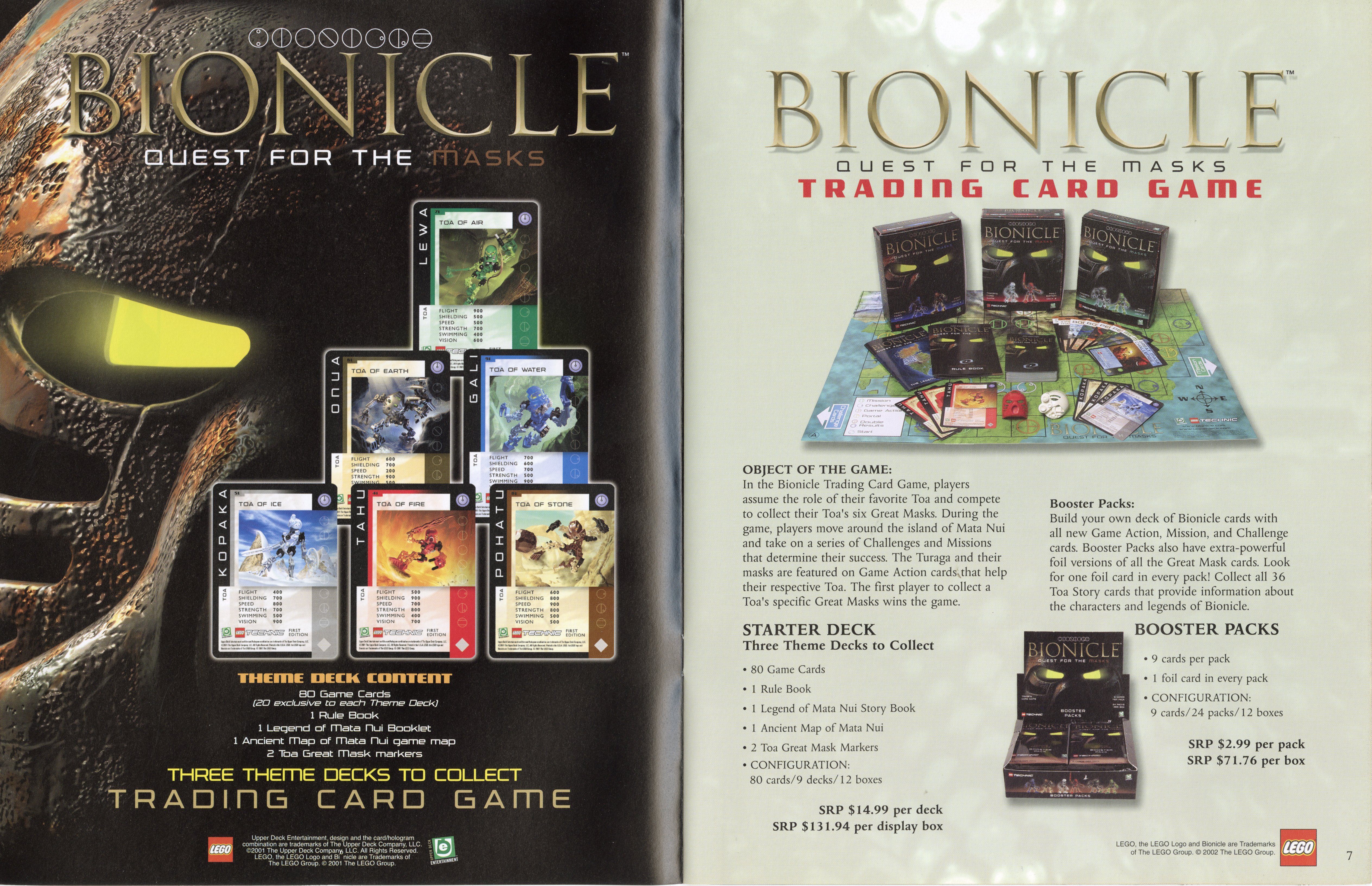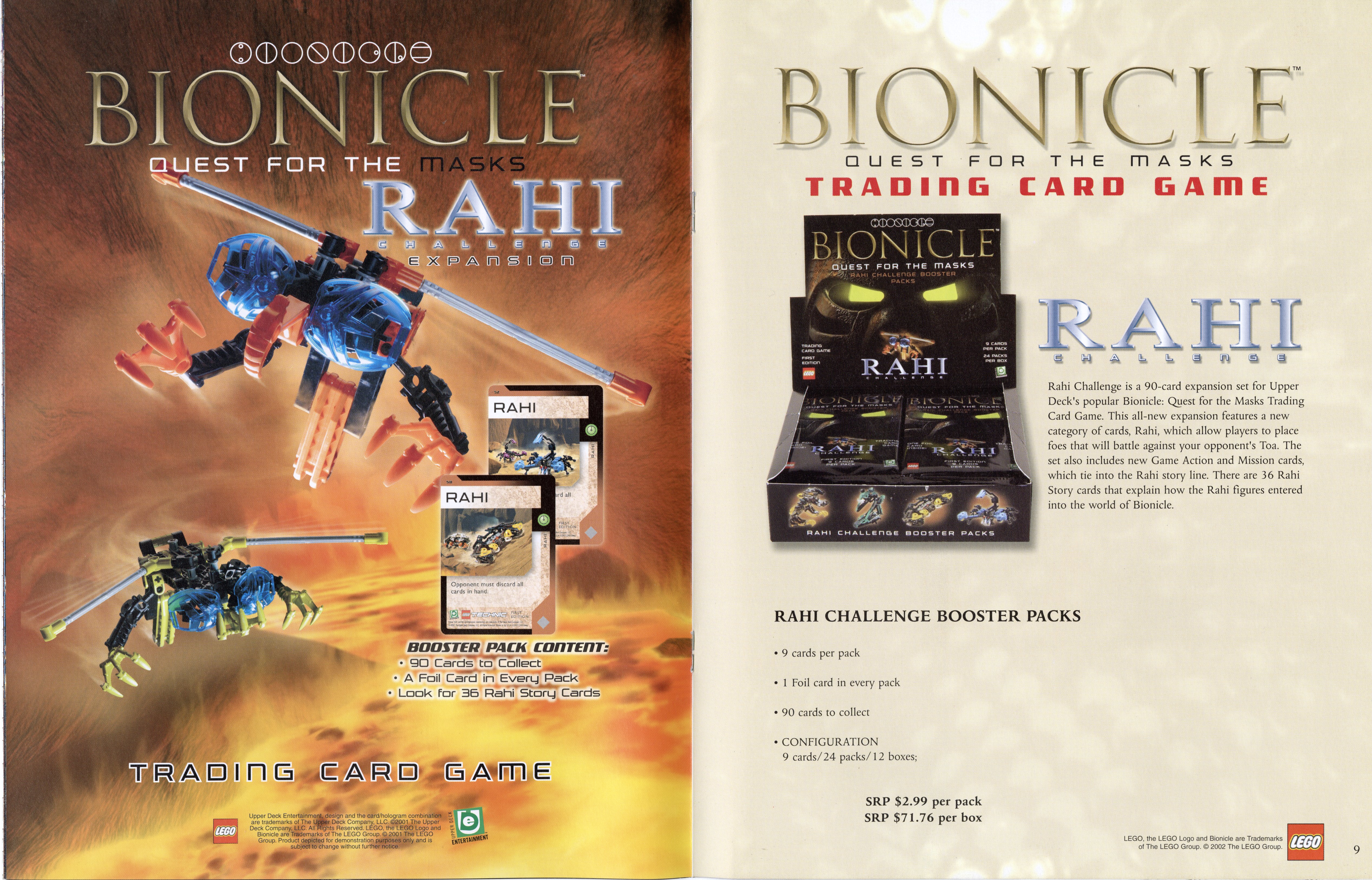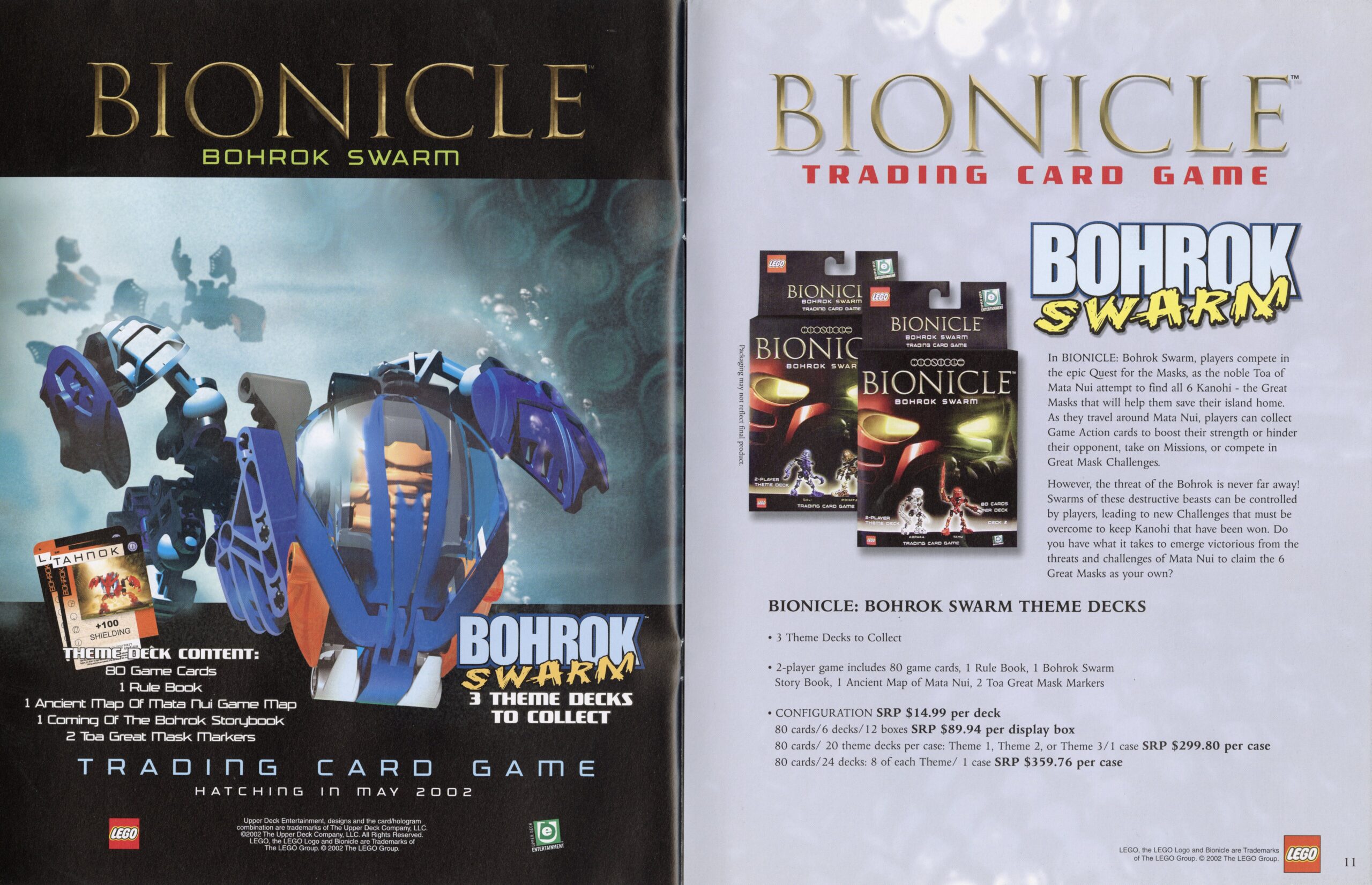A couple of weeks back, we at Litestone Studios released our final expansion for BIONICLE Quest for the Masks RECHARGED, Rising Shadow, Hidden Light. To coincide with this momentous milestone in the game’s development, we had the privilege of talking via text Q&A with Ted Adams, lead game designer behind the original Quest for the Masks TCG, and founder of IDW Publishing. Read on to find out what he had to say about his contributions to the project, his time with Upper Deck, and his work with IDW.
Vahkiti: How did you get started working with Upper Deck and The LEGO Group?
Ted: In the mid-90s, I worked for Jim Lee’s WildStorm Productions in San Diego. Among other things, I was responsible for producing the company’s trading card sets and helped bring to market the CCG, WildStorms. There was another trading card company in San Diego (Krome Productions) that specialized in “chromium” trading cards. Jerry Bennington had a relationship with them and I got to know him because we used the “chromium” process on some of the WildStorm cards.
In 1999, I started IDW with some friends. In the early days of IDW we billed ourselves as a creative services company. Around that same time, Jerry had landed a job at Upper Deck where he oversaw their non-sport/entertainment cards and he was kind enough to bring on IDW as creative consultants to his division.
We worked on several CCGs for Upper Deck, including ones based on the TV show Survivor; NASCAR; Gregory Horror Show; a Harry Potter homage, Wizard in Training; and Bionicle. We also helped Upper Deck bring the extremely successful Japanese game, Yu-Gi-Oh, to the US. The trading card sets we worked on included Disney Treasures.
Vahkiti: What is your fondest memory about your time working on the Quest for the Masks project?
Ted: I had the opportunity to visit LEGO’s main headquarters in Billund Denmark and their Windsor office in the UK and their Enfield, Connecticut office in the US. LEGO was (and, I assume, is) an impressive company with dedicated and serious employees. Quality control was of extreme importance to them and they were sincere in producing quality products for kids. I was proud to be working on a project for them.
There’s a Legoland north of San Diego and they used the Bionicle card game throughout the park. My memory is there was a scavenger hunt where kids had to find blow-ups of the cards and they used the game mat for a live stage show. It was a fun and unusual experience to have our work used in that way.
Vahkiti: Were there any other projects you worked on with Upper Deck? If so, which one was your favourite to work on and why?
Ted: I mentioned the produced games above. I enjoyed working on all of them but the Survivor one is probably my favorite. It was my first solo game design and I think it’s a fun game.
I also worked on a game based on the NBA and was disappointed when that one didn’t come out. I’m a lifelong basketball fan and I came up with a points system that I thought did a good job of reflecting the skill sets of individual players. At WildStorm, I worked on a basketball card game that used fictional teams and players called Fast Break. Fast Break was a fun experience but I wish the NBA game had been produced.
As I mentioned, we also worked on non-sport/entertainment trading cards for Upper Deck. I don’t remember all of the sets but I do remember writing the text for the back of the cards for a set based on the movie Battlefield Earth. The movie wasn’t good but I did my best.
Vahkiti: What would you say is your proudest accomplishment with either Upper Deck or IDW?
Ted: I enjoyed my time working with Upper Deck. There was a team of three people at Upper Deck that we worked closely with for several years. We traveled the world together and did our best to put out cards that we hoped people would like. When Jerry secured the Yu-Gi-Oh license it was fun to see that become a huge success. The money Upper Deck made from that game ultimately meant they could hire dozens of employees for the non-sports/entertainment division which meant they no longer needed IDW. Upper Deck was our biggest client (by far) and losing them meant that I had to figure out a way to pivot the company and that lead to the creation of IDW Publishing. In the long run, that worked out for us. Many years later, Jerry would join IDW and he did a great job creating a games division for us. He also figured out a way to get the rights to do a graphic novel adaptation of Hunter Thompson’s Fear and Loathing In Las Vegas, a project I’d long wanted to do.
I published thousands of comics and books at IDW so it’s hard to have a “proudest accomplishment” but some highlights for me were Darwyn Cooke’s adaptations of the Don Westlake Parker novels, Joe Hill and Gabriel Rodriguez’s Locke & Key, Beau Smith’s Wynonna Earp, the Artist’s Edition line, Dean Mullaney’s Library of American Comics line, Steve Niles and Ben Templesmith’s 30 Days of Night, and the John Lewis March series which we acquired when we purchased Top Shelf Productions.
Vahkiti: If you recall, what was the brief from LEGO in regards to the project? What were some specific things they required of the game, and what did you and your team have more free reign on?
Ted: Bionicle was produced before LEGO was doing a lot of licensed sets and, as I mentioned before, they were serious about the way they approached their products. So, at that time, the Bionicles couldn’t have “weapons,” they had “tools.” Card games generally have battles of some sort and we had to come up with a way to make the game fun that wasn’t overtly violent. I remember one of the Star Wars sets came out around the time we were developing the Bionicle game and that, of course, had blasters and light sabers.
The only other requirement I remember is the gameplay had to include the masks, which is why I created the gameboard. I think the hope was that the masks would become collectible, and I think there may have been limited editions of some of them.
Vahkiti: Were there any other games or media (aside from BIONICLE, of course) that helped inspire the gameplay and mechanics of Quest for the Masks?
Ted: No. This is probably a good place to say I wasn’t a Magic the Gathering player. I grew up playing board games and the games I designed were more like board games than Magic style TCGs. My Dad and I played Stratego many times and, if there’s any game that may have influenced my design, it would be that one but I don’t think there’s really any direct correlation to be found.
Vahkiti: It has been observed in recent years that the Bohrok Swarm game never got printed story cards like the base game and Rahi Challenge expansion did, but it looks like there was art made for it that was used in a companion booklet. Do you recall if there was any specific reason or story behind that decision?
Ted: The mostly likely thing that would have led to a product not coming out is poor sales. We were generally working ahead on expansions so it’s possible that art could have been created in anticipation of another set.
Vahkiti: What were some of the challenges that you and your team faced in developing the game and its mechanics?
Ted: The main challenge was figuring out how to incorporate the masks into the gameplay. I think my long-time business partner, Robbie Robbins, may have done the graphic design for the playmat.
Vahkiti: Did you also work on the games that LEGO produced after Bohrok Swarm such as The Bohrok Awake and Toa Nuva Reconstruct? Was there any particular reason given for discontinuing Quest for the Masks and starting two entirely different projects?
Ted: I didn’t work on any other Bionicle games and I don’t know the reason for discontinuing Quest for the Masks but my guess would be that it was based on sales.
Vahkiti: If you had a chance to go back and change anything, would you do so and, if so, what would it be?
Ted: I wouldn’t change anything. That doesn’t mean I think the Bionicle game is perfect but it was done to the best of my abilities. My career took me down a path that didn’t include any more game design so I haven’t improved my skill set in that arena.
Vahkiti: What made you and Robbie decide to start up IDW?
Ted: There were four of us who started IDW; me, Robbie [Robbins], Alex Garner, and Kris Oprisko. We’d all worked together at WildStorm Productions. When we started IDW, we had no intention of publishing comics. I’d spent my career working in comics and was ready for a break. We wanted to be a creative services studio. We did that successfully for a few years but when Upper Deck decided to staff up internally, I recognized we were going to need to figure out a new way to make money and we launched IDW publishing.
Vahkiti: Who are/were your industry inspirations either at Upper Deck or IDW?
Ted: I worked for a decade for comics publishers before we started IDW. My mentors were the owners/managers of those companies, including Dean Mullaney and Beau Smith at Eclipse, Mike Richardson at Dark Horse Comics, John Nee and Jim Lee at WildStorm, and Todd McFarlane and Terry Fitzgerald at Todd McFarlane Productions. I learned different things from all of them but, in general, they set me on the path of the publishing approach I used at IDW. That approach was to license big entertainment brands that would be commercially successful and allow me to publish the projects I was passionate about.
Ted was also kind enough to include some scans of an Upper Deck catalogue circa. 2002 that has not previously been seen. It includes a look at some early card designs for the Rahi Challenge and Bohrok Swarm expansions! You can find the images below, and on the BMP archive.



We hope you enjoyed this look behind the curtain on the development and history of BIONICLE Quest for the Masks, and that you continue to enjoy QFTM RECHARGED, available now on the Steam Workshop for Tabletop Simulator! While we may have released our final major expansion, development on the game as a whole is not quite done yet. From all of us at Litestone Studios, we thank you for playing! Stay tuned for future updates!
0 Comments